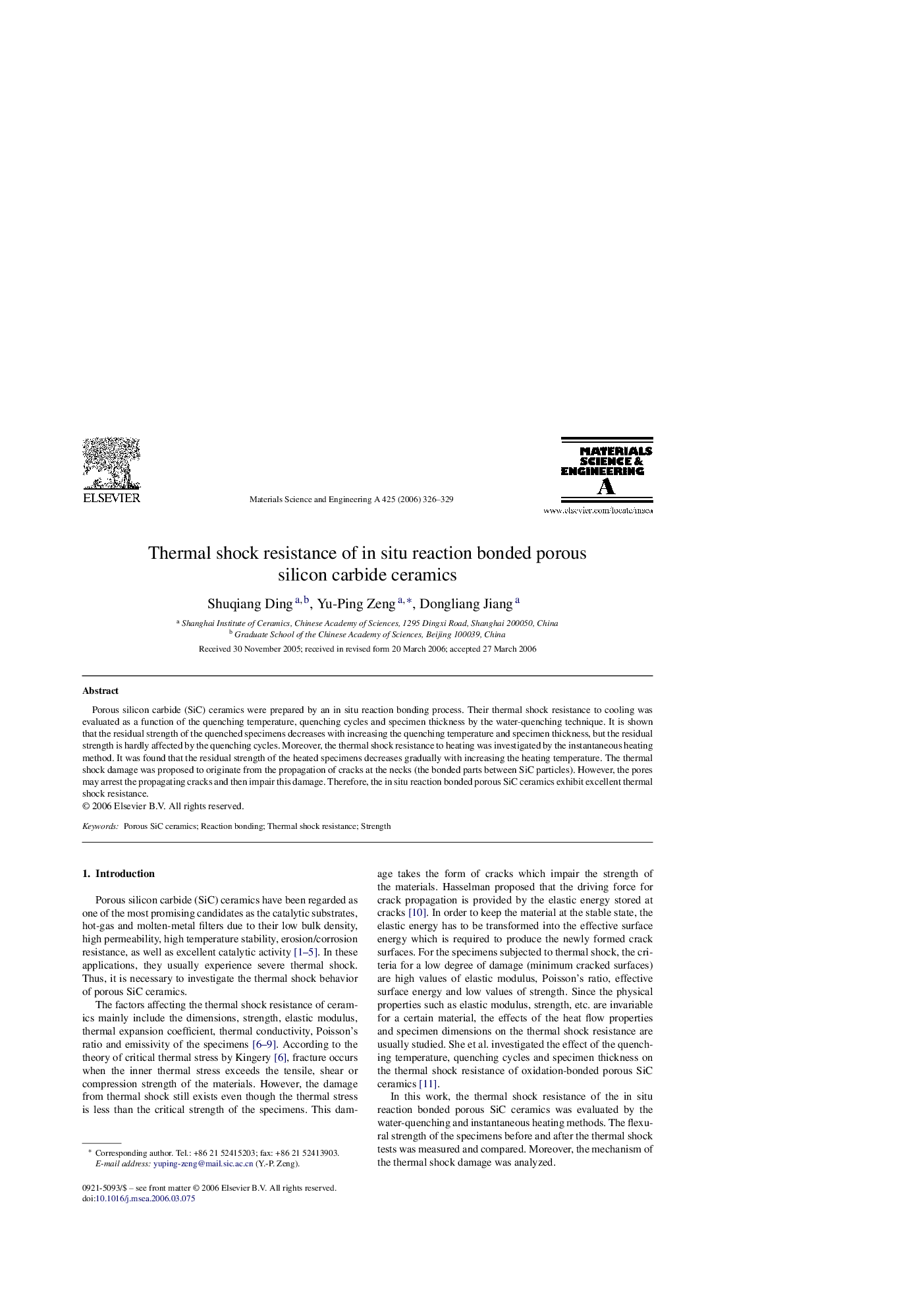| Article ID | Journal | Published Year | Pages | File Type |
|---|---|---|---|---|
| 1585458 | Materials Science and Engineering: A | 2006 | 4 Pages |
Porous silicon carbide (SiC) ceramics were prepared by an in situ reaction bonding process. Their thermal shock resistance to cooling was evaluated as a function of the quenching temperature, quenching cycles and specimen thickness by the water-quenching technique. It is shown that the residual strength of the quenched specimens decreases with increasing the quenching temperature and specimen thickness, but the residual strength is hardly affected by the quenching cycles. Moreover, the thermal shock resistance to heating was investigated by the instantaneous heating method. It was found that the residual strength of the heated specimens decreases gradually with increasing the heating temperature. The thermal shock damage was proposed to originate from the propagation of cracks at the necks (the bonded parts between SiC particles). However, the pores may arrest the propagating cracks and then impair this damage. Therefore, the in situ reaction bonded porous SiC ceramics exhibit excellent thermal shock resistance.
